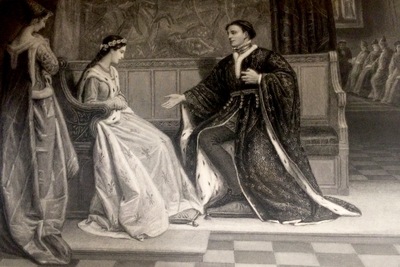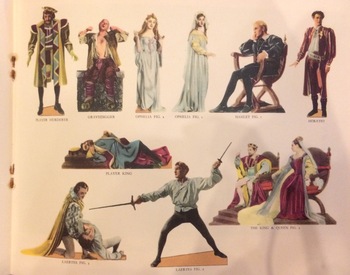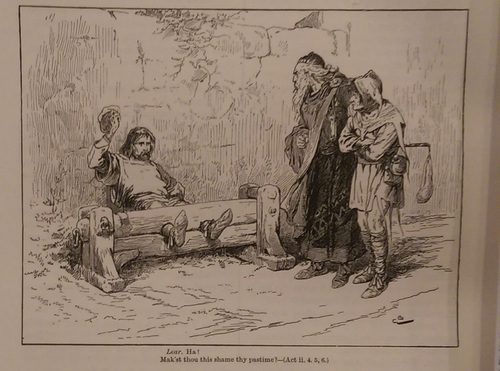In a Shakespeare class I took last semester, I read a great article by Phyllis Rackin and Jean Howard that explained how Henry V shows the shift of masculinity at the time Shakespeare wrote the play. Before this play, masculinity was linked to nobility through blood, i.e. preservation of a bloodline, whereas Henry V is the first of his plays to show masculinity as a result of achievement or conquest in battle and in love. Lust was once a feminine, emasculating vice, because a woman could dilute the bloodline and thus remove your masculinity, so denying women sex was seen as an expression of dominance. In this play, lust belongs to men as a tool of power; successfully seducing someone shows that same male dominance.
Near the end of Henry V (spoilers ahead!), King Henry seduces the French princess Katherine and marries her, thus sealing his control over France and validating his authority as a man and as a leader. This scene is often seen as a sort of coercion or forced wedding; Katherine barely speaks any English (and barely speaks at all) while Henry does the wooing, marrying her with little preamble and little input from her. It is likely that at different times in history, this scene was more or less romantic and organic; nowadays, with the emphasis on female autonomy that has been growing, this sort of seduction becomes problematic and unromantic, at least as I see it.

In this picture, drawn by an unnamed reader, Katherine looks very young, swaddled and protected by a large hood. She looks almost sad, unmoved by the “conversation” taking place right next to her face. Maybe this reader thought the seduction was romantic and reciprocated; we can’t know just from looking at this image. But the way that Katherine is shown – her clothes, her face, her expression – all contribute to a narrative about what this seduction means to the seduced party. Going through the scene with this mental image is very different from the next image:

This Katherine, an image from the same copy of the play (by a different artist) shows a classic princess smiling sweetly in her pretty gown. Her royal status is emphasized by the crown and scepter and her romantic side comes through thanks to the flower and the sweet expression on her face, just as King Henry wanted if he is indeed partially using her to validate his authority. This Katherine fits the bill for what one might expect a willing contributor to a royal marriage to look like. If this Katherine comes on stage, the wedding is more likely to be a happy occasion than something done strictly for political gain, or unwillingly.

This photo is, to me, the most interesting. Entitled “The Wooing of Henry V,” here we have Katherine sitting forlornly on a throne, accepting Henry’s grand physical expression of love and desire. This Katherine looks like an adult woman, sitting in a position that normally would be one of power. She is a very different Katherine from the first two I’ve shown you, but at least in this still frame, we still see nothing to suggest that she wants this marriage as much as he does. Even the title gives a sense that this is not a conversation; it is a directed seduction. Henry woos Katherine, an unmoving, possibly undesirous female.
To me, this seduction style is a flaw in the personality of the manly, charming Henry V. But to some, this scene is utterly romantic, an expression of love at first sight and the strength of love even with a significant language barrier. These opposed understandings of the same scene and relationship could reflect shifting cultural values over time, or it could simply be a result of who I am and how I was raised. The beauty of costume, design, and acting is that these elements combined could make me see an entirely different interpretation of the scene; possibly, if a charming Henry wooed the girl in purple from the second photo, I would be more on board with the seduction, at least in that production. The creators of different productions have a lot of power over interpretation, and they have no choice but to use and thus impact my understanding of the play.
















